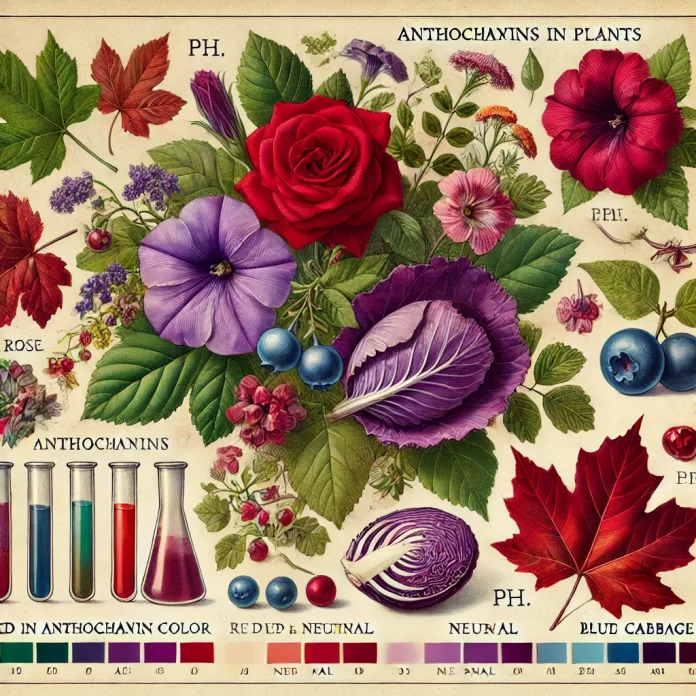Anthocyanins
Definition
Anthocyanins are water-soluble pigments belonging to the flavonoid group, responsible for red, purple, and blue coloration in plants. They are found in flowers, fruits, leaves, stems, and even roots, playing a key role in plant coloration, stress response, and pollinator attraction.
Chemical Properties
- Derived from flavylium ion structures.
- Color is pH-dependent:
- Acidic conditions (pH < 3) → Red
- Neutral conditions (pH 4-6) → Purple
- Alkaline conditions (pH > 7) → Blue
- Common anthocyanins include cyanidin, delphinidin, pelargonidin, peonidin, petunidin, and malvidin.
Functions in Plants
- Attracts pollinators and seed dispersers (e.g., brightly colored flowers and fruits).
- Protects against UV radiation and oxidative stress.
- Provides defense against herbivores and pathogens.
- Regulates temperature and light absorption in leaves (e.g., red autumn foliage).
Occurrence in Horticulture & Agriculture
- Found in many ornamental plants (Rosa, Viola, Petunia).
- Gives vibrant color to fruits and vegetables (e.g., blueberries, red cabbage, black grapes).
- Used as natural food colorants and studied for antioxidant health benefits in human nutrition.
Anthocyanins are vital for plant survival, influencing both ecological interactions and human agricultural practices.




